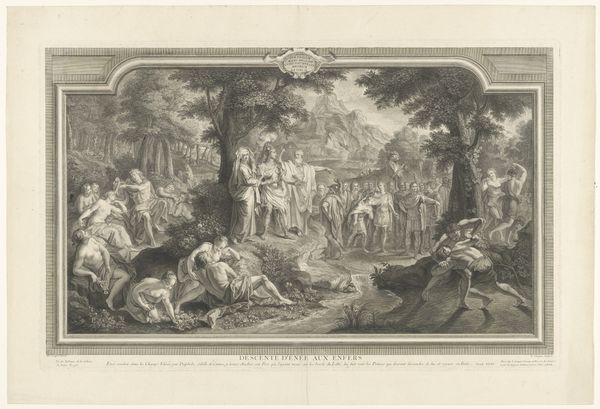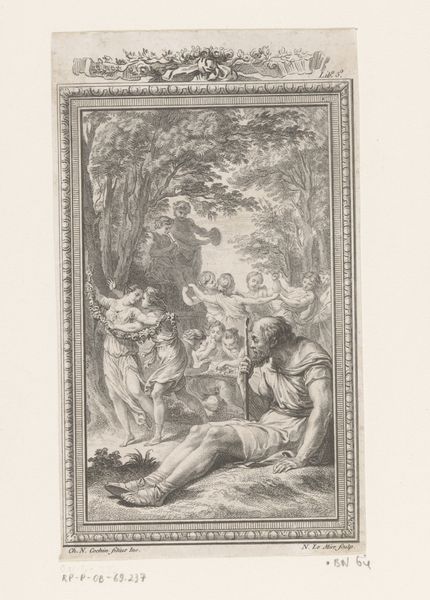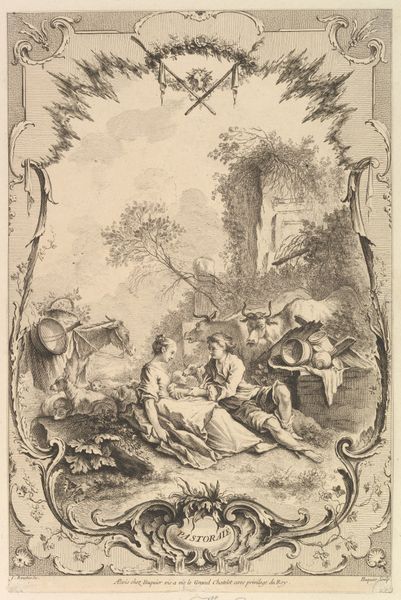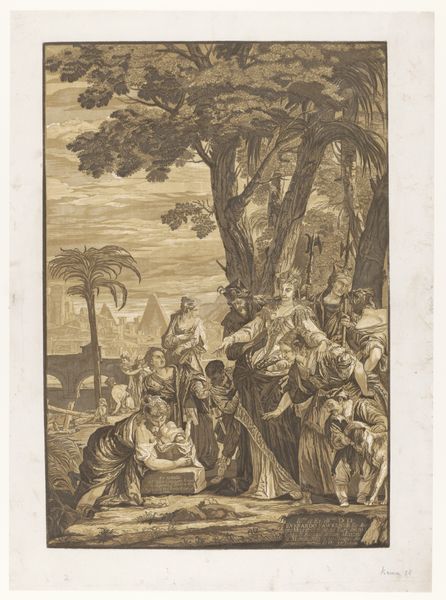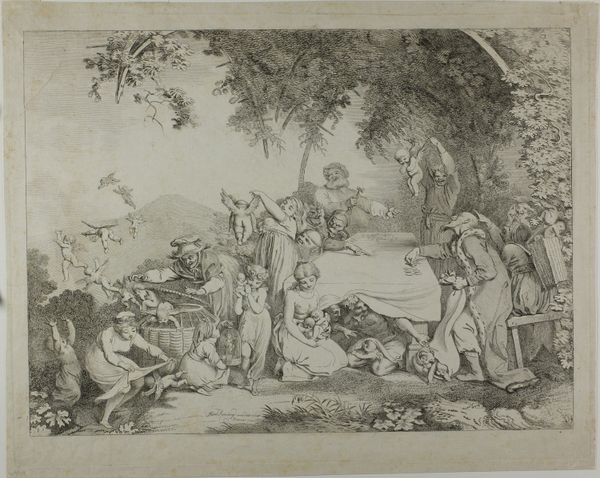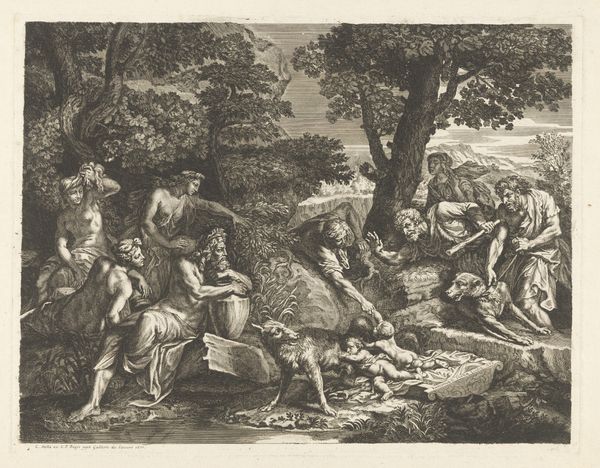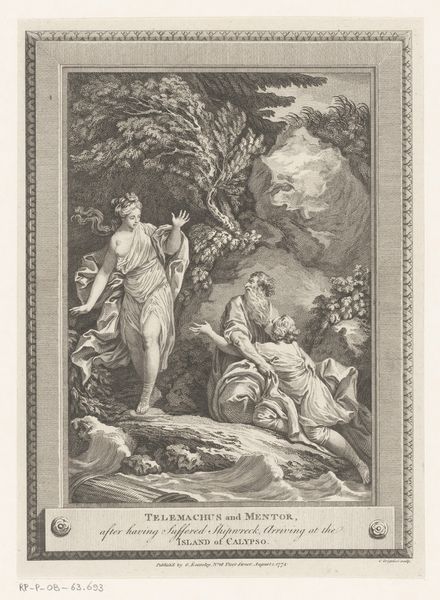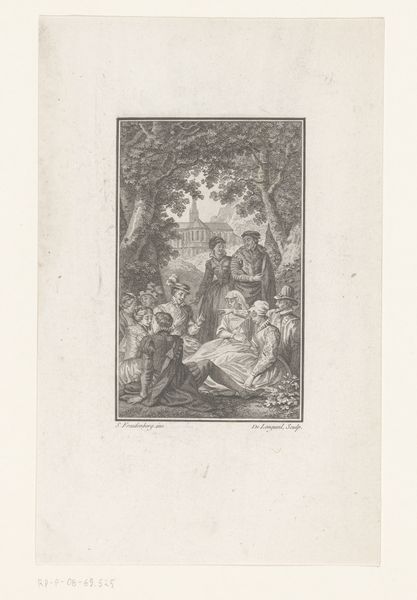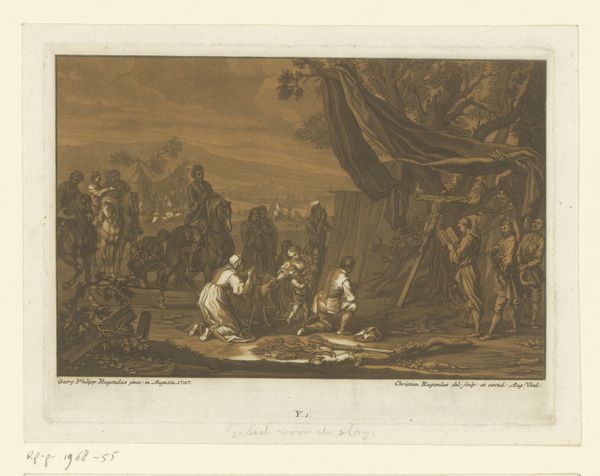
print, engraving
#
allegory
#
baroque
# print
#
old engraving style
#
landscape
#
figuration
#
line
#
history-painting
#
engraving
#
historical font
Dimensions: height 290 mm, width 193 mm
Copyright: Rijks Museum: Open Domain
Editor: So, this is "Allegorische voorstelling met herders en herderinnen" made in 1728 by Bernard Picart. It’s an engraving. The figures, the landscape...it feels so elaborate. How would you unpack this print, with its teeming activity? Curator: Well, look at it materially. It’s a print, made to be reproduced, consumed widely. These aren't unique works meant for wealthy patrons but rather made for a broader audience, to disseminate ideas about idyllic life, allegories and history painting themes in a growing market of consumers. What does the medium itself, engraving, say about its intended use and value? Editor: That's interesting... I hadn't really thought about it in terms of production. So, this isn't just about what’s depicted but also *how* it was made, and for whom? Curator: Exactly. The print medium itself invites a new perspective. How does this influence your understanding of the subject matter, and does it connect with a specific segment of society? Consider the skill required for engraving. Is there labor visible in the intricacy? Editor: I see what you mean! The sheer amount of detail must have taken incredible skill and time. It’s easy to overlook the labor behind something so “delicate”. Are there other clues as to who this print might have been aimed at? Curator: Note the combination of historical references with more pastoral imagery. The elite class often idealized this life of shepherd and shepherdess, even taking on roles as such for amusement. How does Picart's composition play with, or even critique, this form of high-class "play"? Editor: It kind of makes it more complicated to think about "play acting". I guess it invites a closer look at how wealth and labour interact within the artwork, which extends the boundaries of art as consumption? Curator: Precisely. The material and social context inform our reading just as much as the classical references. Editor: I definitely see this print with a new set of eyes, understanding not only what it depicts but also how and for whom it was made. It's far more complex.
Comments
No comments
Be the first to comment and join the conversation on the ultimate creative platform.

